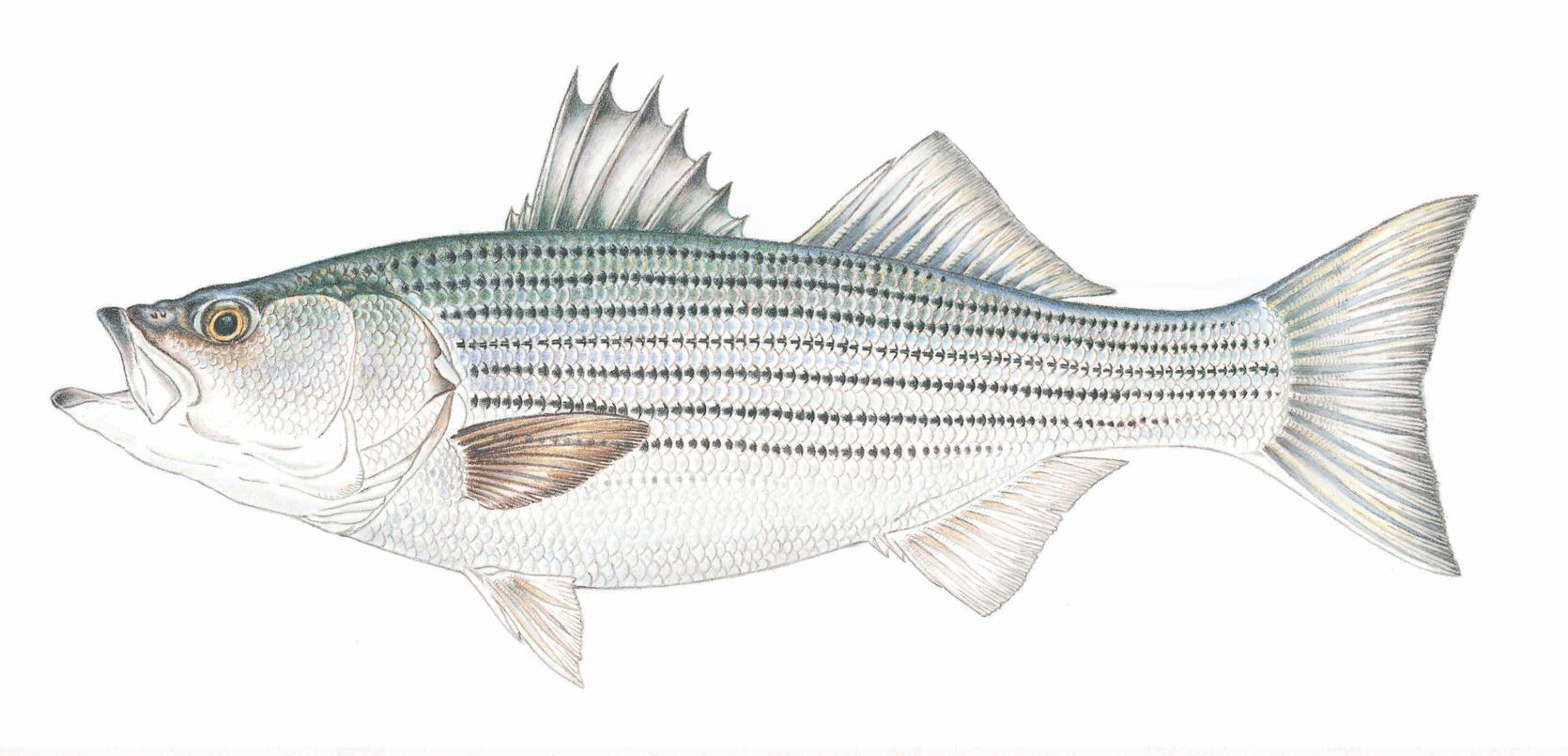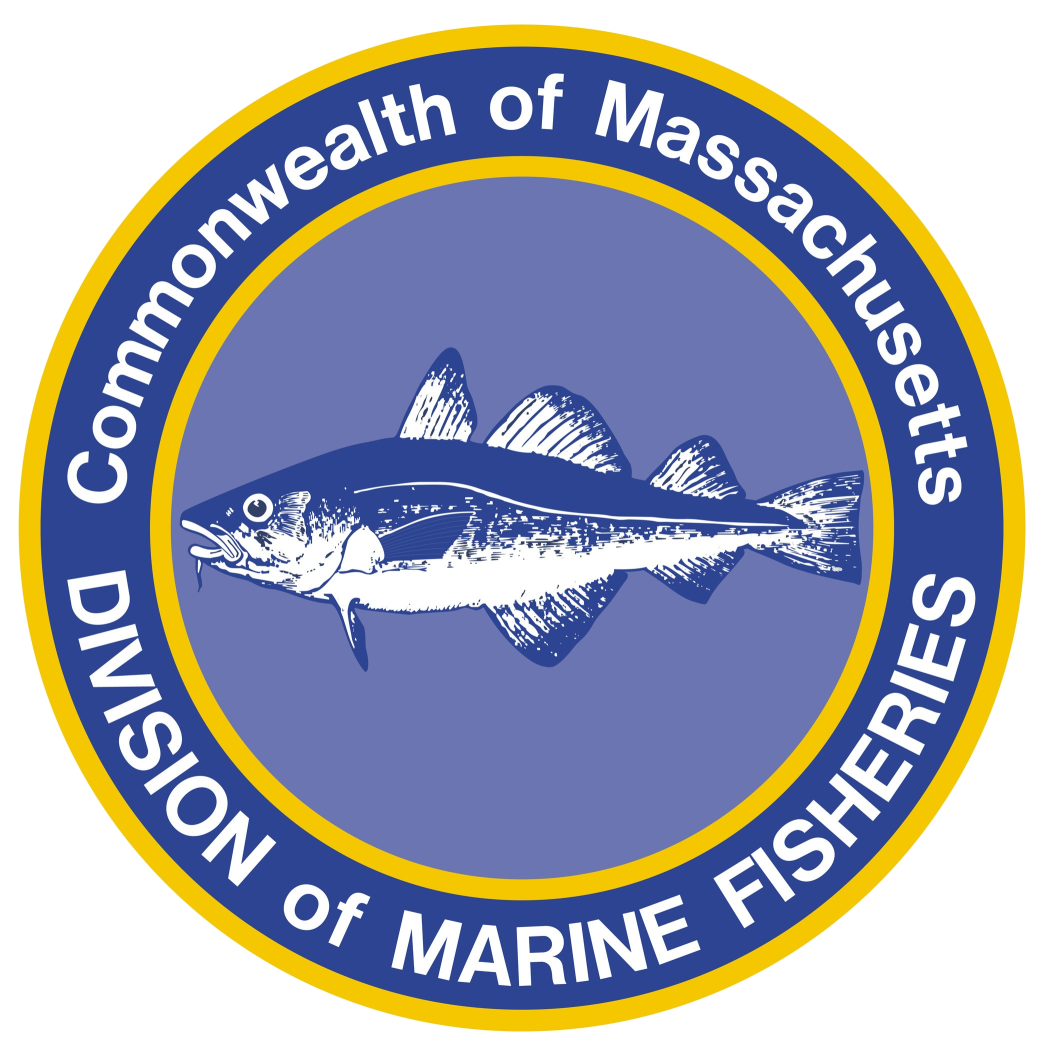- Division of Marine Fisheries

Later this winter, the public will have a chance to weigh in on the Division’s management of the Massachusetts commercial and recreational striped bass fisheries. A number of the proposed changes for 2020 are new interstate management requirements in response to updated stock status, while others are optional tools to improve the fisheries’ performance.
This past October, the Atlantic States Marine Fisheries Commission approved Addendum VI to Amendment 6 of the Interstate Fishery Management Plan for Striped Bass. The addendum followed in the wake of a new stock assessment for striped bass indicating that the rate of fishing mortality has exceeded its threshold level (“overfishing was occurring”) and spawning stock biomass has declined to below its threshold level (“the stock is overfished”). Addendum VI mandates 18% reductions in fishery removals from both the commercial and recreational fisheries in order to reduce the rate of fishing mortality to its target level.
For the commercial fisheries along the coast, this means an 18% cut to the state-by-state commercial quotas. For the recreational fisheries along the coast, the FMP standard of a 28” minimum size was replaced with a slot limit of 28” minimum to less than 35” maximum size (at the existing one fish limit). However, states have the option to implement regulations that are approved to be “conservationally equivalent.” Conservation equivalency is a hallmark of most Atlantic States Marine Fisheries Commission interstate plans to allow states flexibility to develop alternative regulations that address local differences while still achieving the goals and objectives of the FMP.
The 3-member Massachusetts delegation to the ASMFC supported the selection of the 28–35” recreational slot limit during Addendum VI’s passage. DMF judged that the alternative option of a 35” minimum size was overly-restrictive for the stock’s condition and would have grave impacts to shore-based harvest and the charter boat industry. There was also ample public sentiment to move recreational harvest, which amounts to about 90% of all fishery removals, off the larger, more fecund fish with the use of a maximum size. DMF has not submitted a conservation equivalency proposal to the ASMFC for our recreational fishery, and consequently, the only option for public hearing later this winter in Massachusetts will be a mandatory 28” to less than 35” slot limit for recreational harvest.
Because the recent stock assessment also found that the biggest source of fishing mortality is from recreational discards, there is also a renewed focus on improving how fish are caught, fought, handled, and released. As a first step in tackling this problem, Addendum VI requires that all states mandate recreational anglers use circle hooks when fishing for striped bass with whole or natural baits—beginning in 2021. DMF already has a circle hook rule in place (effective January 1, 2020); however, the ASMFC’s new mandate is broader than DMF’s existing requirement. Specifically, the state’s rule provides exemptions for anglers fishing aboard for-hire vessels, or when fishing with certain gear configurations. DMF awaits ASMFC review to determine whether or not Massachusetts is allowed to keep any or all of these exemptions. If not, they’ll be phased out of the MA rule by 2021 if not sooner. DMF is also proposing to take an additional optional step to reduce recreational discard mortality by requiring recreational fishermen use only non-lethal devices (e.g., boga grip, landing net) if using a device to remove striped bass from the water, effectively banning gaffing for this sector.
The 18% cut to the coastal commercial quotas reduces Massachusetts baseline quota from 869,813 pounds to 713,246 pounds—at our existing 34” commercial minimum size limit. However, DMF has a strong interest in increasing the size limit one inch to 35” such that the recreational and commercial fisheries are completely separate in terms of legal-sized harvest. This has the potential to alleviate some significant ongoing enforcement and compliance issues, particularly in fishing hot spots like the Cape Cod Canal. This will be our preferred option at public hearings this winter, although we will also present 28” minimum and 28–35” slot limit options for the commercial fishery. Each has a consequence for Massachusetts quota due to conservation equivalency requirements.
We anticipate that some recreational fishermen will question why the commercial fishery continues to target larger fish when they are prohibited from doing the same with the new recreational slot limit. Consider that the recreational fishery harvests about 10 times that of the commercial fishery and will kill more large striped bass by means of catch and release mortality than the commercial fishery will harvest. Implementing the same slot limit for the commercial fishery would likely drive more participation in the fishery than the current 34” minimum size and, at the same time, would necessitate a significant reduction in the commercial quota to not impact the spawning potential of the stock. A separate size limit for the commercial fishery will spread out some of the fishing mortality across more age classes, and the one inch increase will result in the removal of fewer numbers of striped bass.
DMF will also be proposing some optional changes to the commercial rules to improve the fishery’s performance. These include moving the season’s opening day from June 23 to as early as June 1 and changing the open days from Monday/Thursday to Monday/Wednesday. These proposals seek to better time the fishery’s operation with when striped bass are widely distributed and enhance market conditions.
Be on the look-out for a notice of public hearings to take place in early March.
By Nichola Meserve, Fisheries Policy Analyst
Striped Bass Conservation Plate in Production!
After a 6-month campaign, orders for the new striped bass license plate have exceeded the 750-minimum threshold. Expectations are that it will take an additional 6 to 8 months to manufacture and distribute the plates to the RMV offices for pickup by the applicants. All applicants will be notified by mail in the weeks ahead.
This plate will become the fourth sponsored by the MA Environmental Trust and the funds generated by its sale will be dedicated to striped bass studies, fish passage improvement projects, and angler education. By fall of 2020, any Massachusetts motorist will be able to obtain this conservation-inspired plate through the RMV.
